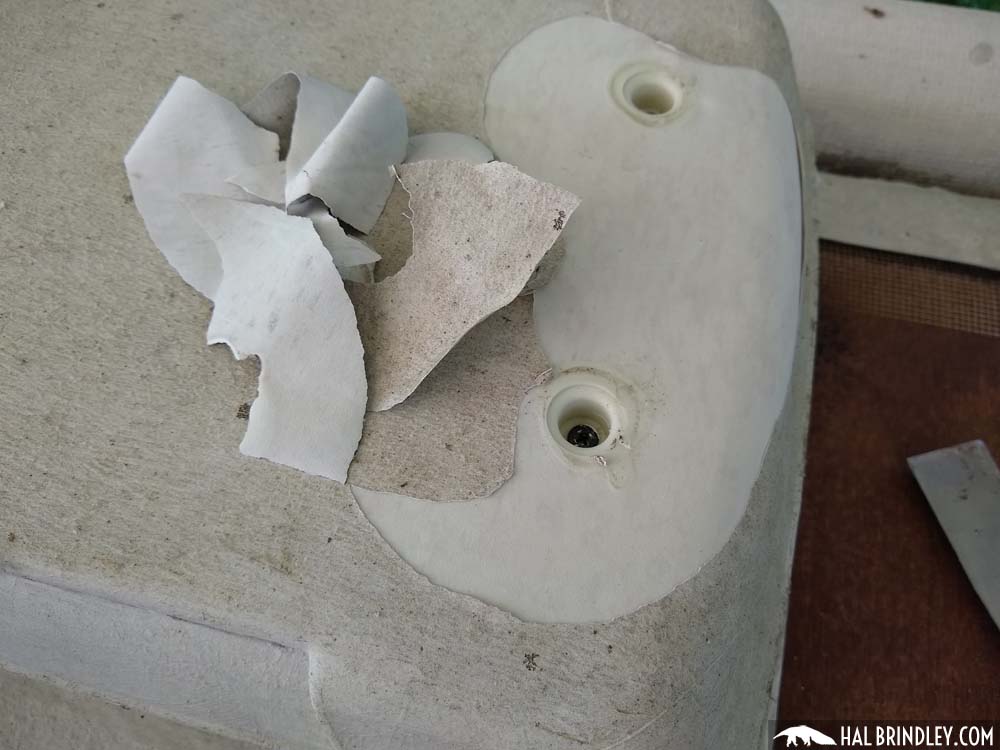 Elastomeric Roof - Premium Acrylic Coatings
Elastomeric Roof - Premium Acrylic Coatings
If you believe you'll be conserving the roof decking plywood (not replacing it), then you may save yourself some clean-up problem by removing the components first and after that peeling up the rubber! Information of water damage on camper roofing. More water damaged areas on Recreational Vehicle roof decking. There was absolutely nothing really terrible that made me seem like I was going to fall through, but certainly a great deal of damage and I was getting the sensation I would be replacing a great deal of the roof decking plywood.
 Elastomeric Rv White Roof Coating
Elastomeric Rv White Roof Coating
Web Link: roof gutter repair https://diigo.com/0jep6r
I chose the easiest one initially, a vent cap from a kitchen area sink plumbing vent pipeline. Beginning to scrape caulk and sealant. I used a stiff scraper with a chisel-like blade and just began prying and chipping and scraping and hacking. There is no other way around this, you simply need to start digging up until you expose the screw heads.
Loosening the screws in vent cap. The screws on this vent cap were hex-head metal screws so I utilized a small socket motorist to remove them. Some came out tidy. Others were rusted and I needed to use a vice-grip pliers to grab the heads and turn them gradually.
I found an old wasp nest inside the vent cover. This is a sight I'll most likely need to get utilized to, finding the remains of animal habitation in every nook and cranny. I invest a horrible lot of my time developing good wildlife habitat in my lawn so I don't get offended when an animal chooses to set up house in my RV.
Kool Seal 10 Year Elastomeric Roof Coating
Fortunately nobody was home in this old nest so I simply tossed it. Maybe I'll put a screen over it when changing it. Which brings us to the next point. You must attempt not to damage these pieces (like vent covers and caps) as you're scraping off the old caulk and sealant just in case you need to use them again.
(Guess I'll learn when the roofing system is done!) Prying up the vent cap and getting rid of the last ring of rubber roofing beneath. So I pried up the remainder of the cap and scraped up the staying rubber roofing system and butyl tape and putty and 25 years of other gunk and here's how it looks tidied up.
 How To Apply Elastomeric Paint (With Pictures)
How To Apply Elastomeric Paint (With Pictures)
One down, 7 more fixtures to go. Next I chose to tackle the only roof ventilation fan that my camper has. My roofing system vent likewise had a vent cover over it. So I began scraping the gunk from those screws. Beginning on the roofing vent. Hardware exposed on roof vent cap, the first nut came off clean.
 Elastomeric & Emulsion Roofing
Elastomeric & Emulsion Roofing
Bolt is spinning. The fasteners on this Recreational Vehicle roof vent cover were nuts on small bolts. The first one came off fine with an extension socket kit. The second one simply began spinning, meaning the bolt was not fixed in place however turning in addition to the nut. Disappointment. A peek at the hardware holding down the roofing system vent cover.
Best Practices For Roof Coating Application
I didn't have any excellent way to hold the bolt in place so instead I decided to saw through the bolts with a reciprocating saw. Sawing through bolts on roof vent cover. I utilized a cordless reciprocating saw with a metal-cutting blade however it was difficult to get the blade flat enough to reach the bolts so near the roofing deck. Many were so old and rusted that they sheared off when I loosened then with a great deal of force. Loosening the brackets that held the vent cover in place. Then I scraped more caulk and roof sealant off the flange of the roofing system vent itself. I soon found there disappeared screws or hardware holding it down so I quit on the scraping and went inside the Recreational Vehicle After scraping the caulk and sealant from flange of roofing system vent, say goodbye to screws! Unscrewing the inside cover plate of roofing system vent fan in RV restroom.
A couple sheared off with a lot of force, but 2 would not budge. So I needed to drill out the screw heads. I picked a drill bit near to the size of the shaft of the screws that I had currently pulled out and started drilling. Choosing a drill bit for drilling out a screw head.
Security glasses advised. So I drilled out the heads, one popped off and the other I was getting irritated with and offered it a tug before it was drilled through. Instead of popping off the screw head, the plastic simply melted away around the hot screw head. Whoops. Hope I don't have to reuse this cover.
If not, I'll need larger screw heads when re-assembling. Cover plate eliminated from roofing system vent. Next I discovered little corner brackets with hex-head bolts holding them in. I unscrewed them (all came out great fortunately) and took out the brackets and little white plastic spacers. Loosening corner brackets in roofing vent.
Adhesion Is Important When Applying An Elastomeric Roof
All corner brackets removed, prepared to pull out. When the brackets were out I returned up top to pry out the the roofing system vent. Then I scraped up all the staying gunk and rubber roofing. Raising off the old roofing vent. There are 2 wires running to the roof vent (a black hot wire and a white neutral wire) that you'll need to clip to eliminate the old vent.